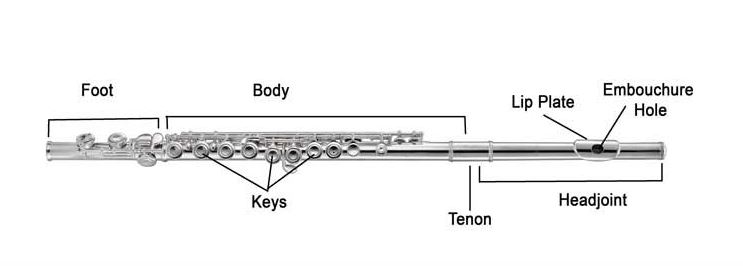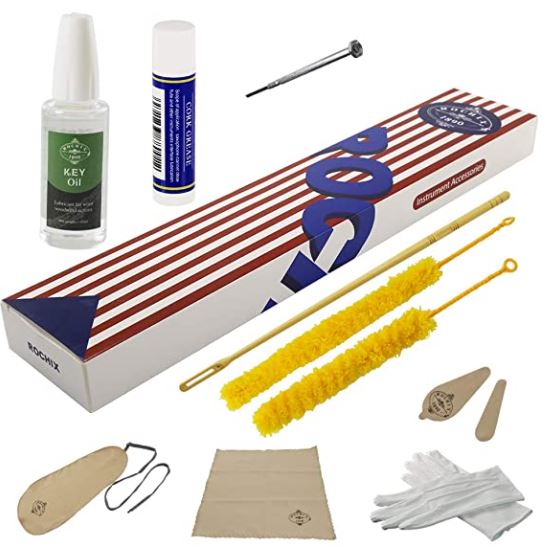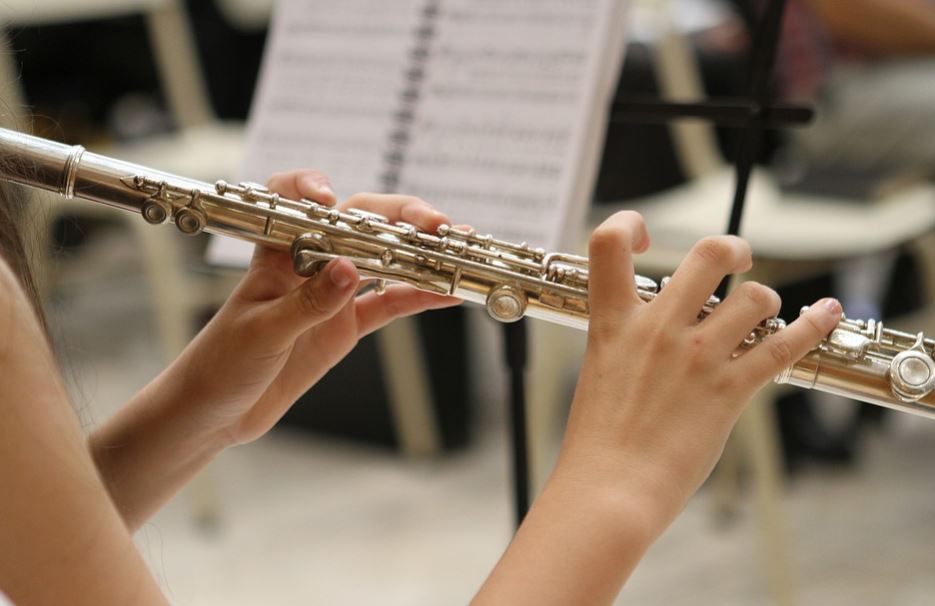How to Clean a Flute?
Whether you are a flute owner or are thinking about getting a flute, you should know that any instrument needs maintenance, and part of that maintenance includes cleaning. The reason why today, we’ll be telling you everything you need to know on how to clean a flute.
Flutes are delightful instruments that aren’t cheap; to ensure the durability of such musical tools; you will need to learn specific steps to keep your investment in good shape. Learning how to clean a flute is, at the same time, vital for its proper performance.
How To Clean a Flute
Follow the next steps to clean your flute instrument properly.
Things you’ll need:
- Silver cloth
- Gauze cloth
- Cleaning rod

Process:
Take the pieces apart gently
To take apart your flute, gently unscrew the head-joint and foot-joint from the body of the flute. This should be done carefully. Ensure not to touch the keys or keypads because these can easily be damaged.
Proceed to clean the inside of the flute
Remove the moisture that builds up inside the flute by gently inserting the cleaning rod into each flute section. You will have to clean inside the head-joint, foot-joint, and body of the flute. The cloth will absorb and remove any moisture inside.
Begin with the head joint. Push the wrapped cleaning rod gently into the head joint. Do not force the cleaner in. If it doesn’t fit, rewind the gauze cloth around the rod, only this time, slightly looser. Push the cleaner right to the top of the head joint with a slight twisting motion; all of the residues are sure to be taken up by the cleaner. Push and twisting the cloth all of the ways to the top will ensure the joint is thoroughly cleaned.
Clean the body. To clean the body, the same procedure is applied. Gently push to a cleaner inside the body of the flute whilst twisting slowly. Do not attempt to reach all of the ways through the flute from one end. Aim for the middle, then turn the flute around and do the same again.
Clean the foot joint. It is important to clean every part of the flute, including the foot joint. Even if you don’t think you’ve been playing long enough for the moisture to have traveled that far, try to get into the habit of cleaning it.
Proceed to clean the outside of the flute
Using the silver cloth that comes in the case with your flute, wipe away any finger marks on the flute.
Time to put your flute back together
Hold the flute’s body where there are no keys and gently twist the head joint into place.
Line up the tone hole in the head joint with the keys on the body.
Being as delicate as you can, twist the foot joint into place. The keys on the body should line up with the rod on the foot joint.
The flute sections are meant to fit together without using any grease. If you have difficulty fitting the sections together, it may indicate that it needs to be cleaned.
Flute Brief Story
The flute ancestors are the transverse flutes, made from animal bones and emerged in Europe in the Paleolithic era. But it wasn’t until the Renaissance period in the sixteenth century that this instrument took an important place in the modern orchestra and came to widespread use.
Where can you get the tools to clean a flute?
If you lost your rod, you could easily check online for a flute cleaning kit like the one below.
Rochix Flute Cleaner Care Cleaning Kit

Features:
- Swab: Enter the pipe body through the pendant to clean the moisture in the pipe.
- Key oil: Maintain the key levers; the keys will be more flexible while playing.
- Cleaning brush: Clean the inner cavity of the flute.
- Cleaning rod: The cleaning rod is used with a cleaning cloth, which can effectively clean and wipe the moisture in the inner cavity of the flute
Common Questions About How to Clean a Flute
How often should a flute be cleaned?
Make sure to clean your flute after each use. Before you put away and store your flute, you must remove the moisture from inside.
What can happen if the flute is left uncleaned?
If left uncleaned, your instrument will begin to smell and tarnish on the inside. As a result, you should clean the inside and outside of your flute after every use.
What is a cleaning rod?
This is a tool that comes with your flute and sits in the case. They come made in either plastic or wood.
What can happen if the rod touches the inside of the flute?
If the rod touches the flute while cleaning, it can scratch and damage the inside of the flute.
How should the rod be used when cleaning the flute?
When cleaning the body section of the flute, be sure to insert the cleaning rod into both ends of the flute. This will ensure that the entire inside is cleaned. You can gently twist the cleaning rod inside the flute to absorb all the moisture.
When cleaning the outside of the flute, why you shouldn’t get too close to the rods?
Try to avoid getting too close to the rods, as there are springs under them, which, if caught, can need springing back into place.
Why is it not advised to let anyone else play your flute?
The flute is a delicate instrument which must be handled carefully. Always put it on a flat surface with the keys up when not in use. Never leave your flute on a music stand.
Recommendations to keep your flute in a great state
- Never use silver polish or any other cleaner on your flute; you only need a soft cloth to wipe off moisture and finger marks after playing.
- To clean your flute, you can use rubbing alcohol on your cloth.
- To keep pads clean, don’t eat candy or chew gum before playing and never while playing.
- Do not let anyone else play your instrument.
- Be careful when playing the flute not to bang or bump it, as it will dent easily, and these dents are difficult and expensive to remove.
- Never try to adjust or twist the head joint cork button. This button changes the total pitch of the instrument and has been adjusted at the factory.
- Important to wash your hand before and after playing or cleaning your instrument.



